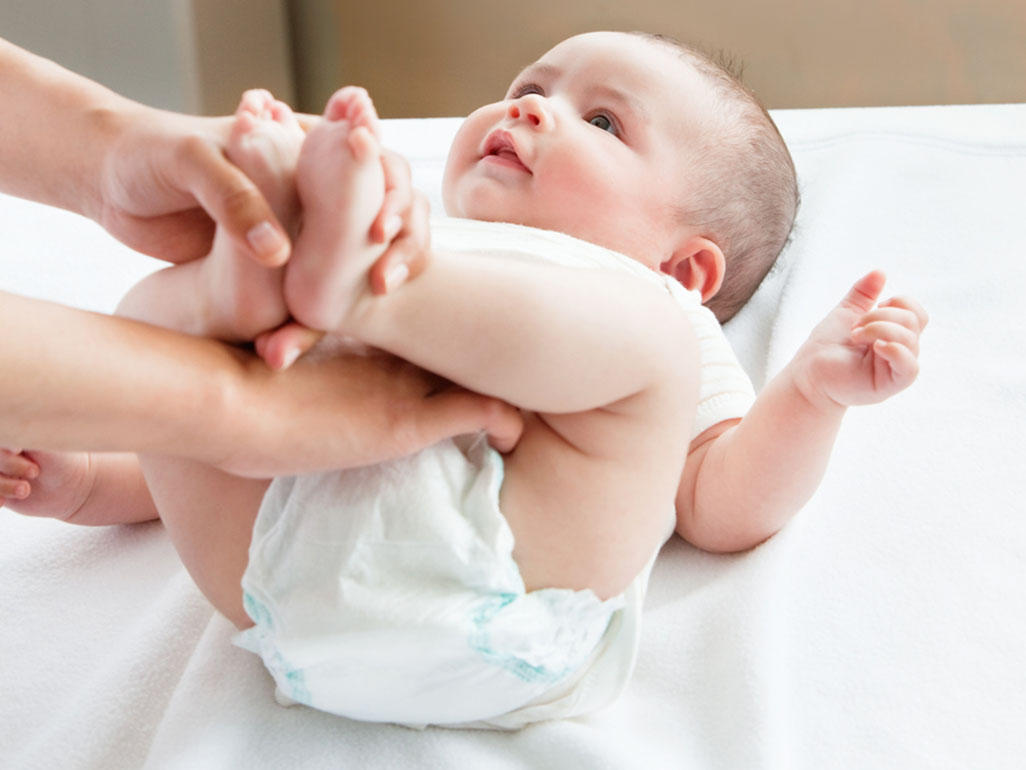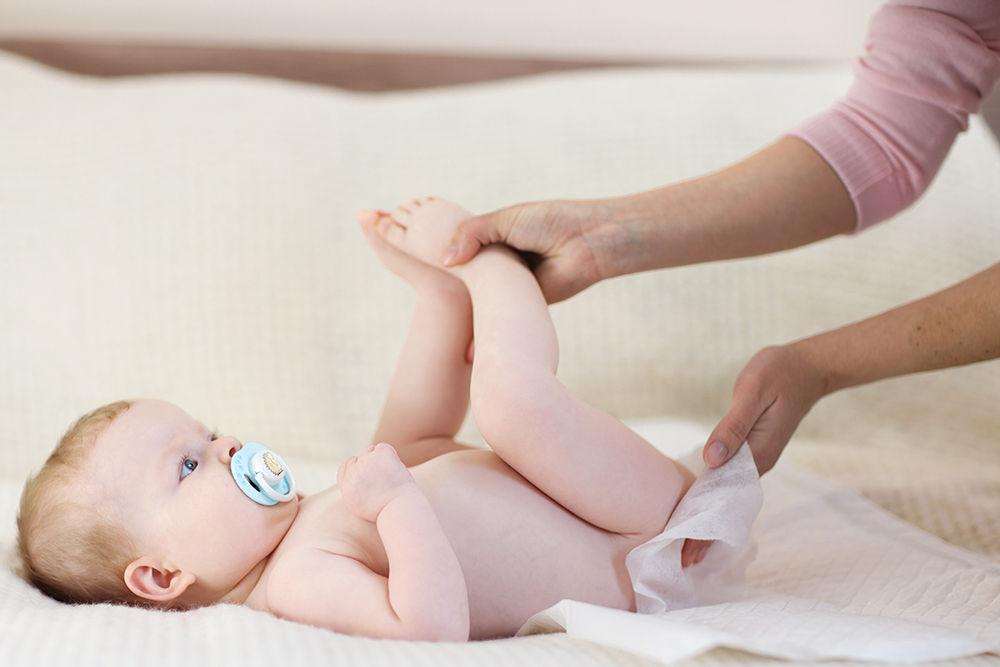Diaper dermatitis (DD), an acute inflammatory reaction of skin in the perineal area, is an extremely common pediatric condition. Neonates, specifically premature neonates, are at increased risk, as well as patients between 9 and 12 months of age.

Baby’s soft skin when left in contact with urine and feces causes the moisture to become trapped against the skin causing increased permeability and susceptibility to damage from friction .Urine contact with diapered skin causes an increase in skin pH thus increasing skin permeability and activating fecal enzymes, known irritants that can cause skin destruction. Rash may become secondarily infected with micro-organisms such as Candida albicans.
Symptoms
- Red elevated areas (papules) and flat, solid areas of skin (plaques) with sharp edges and skin flakes (scale) as well as surrounding “satellite” skin elevations containing pus (pustules).
- Redness (erythema) may appear to be joined into one area (confluent).
- Breakdown (erosions) or loss of the upper layer of skin may be present.
- Alternatively, the lesions may be merging together (coalescing) small pink bumps with overlying scale, without any redness.
Treatment
Mild diaper dermatitis usually responds well to non-pharmaracological measures and regular use of topical barrier products. Topical hydrocortisone and antifungal products should be reserved for symptoms which are causing infant discomfort.
Non-pharmacological measures
- Frequent diaper changes.
- Expose diaper region to air as much as possible.
- Use barrier ointments such as zinc oxide paste or petrolatum (Vaseline®) or coconut oil with diaper changes
- Wash diaper area with warm water alone, or with a mild soap and gently pat dry.
- Avoid use of perfumed or lanolin-containing diaper wipes.
- Try to avoid irritants (caffeine, citrus, or spicy foods) in mother’s diet in breastfed infants.
- Avoid feeding infant food that can cause diarrhea.
Over-the-counter drug options
- Apply zinc oxide ointment, white petrolatum or other barrier cream after each diaper change. Skin should be clean and thoroughly dried before application.
- Avoid baby powders. If inhaled, they may cause serious breathing problems.
- Consider recommending hydrocortisone 0.5 % cream only if the rash is irritating the infant. Apply once or twice daily until symptoms resolve or for maximum of 14 days.

OTC / Prescription drug options
Irritant Diaper Dermatitis
- Consider a very low-potency steroid cream, such as hydrocortisone 0.5-1% cream. Apply once or twice daily until rash resolves for no more than 7 – 14 days.
- Continue with barrier therapy. Apply topical hydrocortisone first, wait five minutes, then apply barrier product.
Candidal Diaper Dermatitis
- A topical antifungal such as clotrimazole 1% cream, ketoconazole 2% cream, miconazole 2% cream, or nystatin cream. Apply cream twice daily, morning and evening, after diaper changes. Continue use until rash resolves. If no resolution after 14 days, refer to MD.
- Discontinue barrier products until the candidal infection has cleared.
- If inflammation is prominent, consider adding a very-low-potency steroid cream, such as hydrocortisone 0.5-1% to be used along with the antifungal cream. Separate application of the hydrocortisone and antifungal by a few minutes.
- Do not mix corticosteroid and antifungal creams prior to applying as this dilutes the concentration of active ingredients.
Symptoms should improve within 7 days. If not, refer to physician.
Reference
Related Links
Disclaimer
The Content is not intended to be a substitute for professional medical advice, diagnosis, or treatment. Always seek the advice of your physician or other qualified health provider with any questions you may have regarding a medical condition.